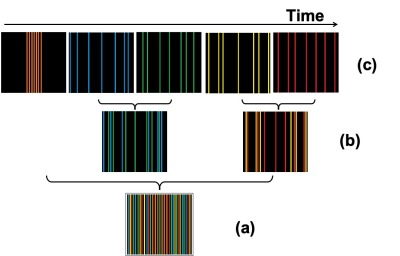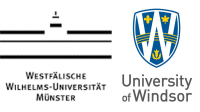Mark Armstrong1, Felix Freppon2, Enrica Wilken2, Max Masthoff2, Cornelius Faber2, and Dan Xiao1
1University of Windsor, Windsor, ON, Canada, 2Universität Münster, Münster, Germany
1University of Windsor, Windsor, ON, Canada, 2Universität Münster, Münster, Germany
A Cartesian sampling scheme for dynamic MRI is presented. Both the high temporal resolution images and fully sampled image are acquired. The undersampling ratio can be flexibly chosen retrospectively, providing a unique advantage when experimental conditions cannot be predetermined.

Figure 3. In vivo cell tracking experiments (a) reconstructed with fully sampled k-space. (b) was reconstructed with 21% k-space data, retrospectively selected from (a). (c) was the time frame following (b) reconstructed with the same undersampling ratio. The red circle highlights a location where the cell is not visible in (a), but visible in (b), and had exited the slice in (c). A few other cells that are visible in (b) and (c), but not in (a), are highlighted in green.

